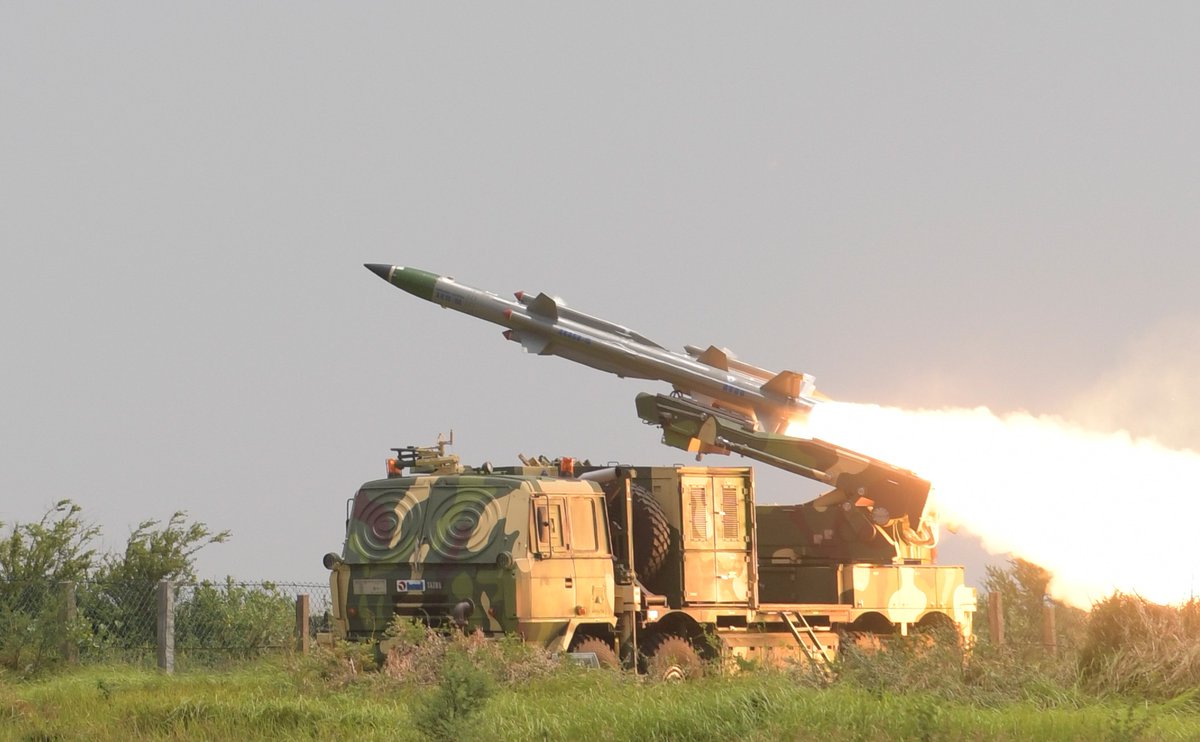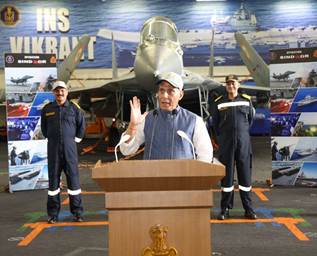SOURCE: AFI


On May 30, 2025, US military expert John Spencer, a retired US Army officer and chair of urban warfare studies at the Modern War Institute, declared India the victor in a technological and military confrontation with Pakistan, describing the latter as a “proxy” for China. This assessment followed India’s Operation Sindoor, a meticulously executed military campaign launched in response to the April 22, 2025, terrorist attack in Pahalgam, Jammu & Kashmir, which claimed 26 civilian lives. The operation, which combined precision airstrikes, indigenous weaponry, and strategic restraint, has been hailed as a turning point in India’s defense doctrine, showcasing its growing self-reliance and technological superiority.
The Pahalgam attack, attributed to The Resistance Front, a Lashkar-e-Taiba offshoot, prompted an unprecedented response from India. Unlike previous incidents where diplomatic channels were prioritized, India launched Operation Sindoor on May 7, 2025, targeting terrorist infrastructure inside Pakistan. Over four days, Indian forces conducted nine deep-penetration strikes, neutralized Pakistani drone swarms, and hit six military airbases and UAV command hubs. The operation culminated in the destruction of terror camps, with reports indicating at least 70 terrorists, including 10 family members and four aides of Jaish-e-Mohammed chief Masood Azhar, were eliminated.
Continue readingSOURCE: AFI


Taiwanese media outlets have recently commended the performance of India’s indigenously developed air defense systems, particularly the Akash Surface-to-Air Missile (SAM) and the Medium-Range Surface-to-Air Missile (MR-SAM), for their effectiveness in intercepting Chinese-designed missiles and short-range ballistic missiles (SRBMs) used by Pakistan during the recent India-Pakistan conflict, Operation Sindoor, in May 2025. The conflict, triggered by a terrorist attack in Indian-administered Kashmir on April 22, 2025, escalated into a series of aerial engagements, with Pakistan launching a barrage of drones, missiles, and rockets targeting Indian military and civilian sites.
According to reports, Pakistan deployed several Chinese-designed systems, including the HATF-I SRBM and guided rockets such as the FATAH-I and FATAH-II, in significant numbers during the hostilities. While Pakistan claims the FATAH-I and FATAH-II are indigenous designs, defense analysts have long pointed out that these systems were developed with substantial design support and technology transfer (ToT) from China. The FATEH series, in particular, bears striking similarities to Chinese rocket systems, with experts suggesting that Beijing provided the foundational technology to bolster Pakistan’s arsenal as part of their strategic partnership.
Continue readingSOURCE: AFI


The Pakistan Air Force (PAF) recently claimed to have shot down at least five Indian fighter jets during the intense aerial engagements that unfolded as part of Operation Sindoor in early May 2025. However, emerging reports suggest a stark contrast to the triumphant narrative, revealing a lack of clarity within the PAF itself regarding how and by whom these alleged kills were achieved. The operation, marked by heightened tensions between India and Pakistan following a militant attack in Indian-administered Kashmir, saw both sides deploy advanced fighter jets and missile systems in a series of tit-for-tat strikes.
According to sources cited by the Indian defense news outlet idrw.org, many PAF pilots flying the Chinese-origin J-10CE and JF-17 aircraft did not provide terminal guidance to the PL-15E beyond-visual-range (BVR) air-to-air missiles they launched. Instead, they relied heavily on the missile’s seeker to independently connect with Indian jets at the last moment—a tactic described as more hope than strategy. This lack of active guidance raises significant doubts about the PAF’s claims, as effective BVR engagements typically require continuous data-link support to ensure accuracy against maneuvering targets.
Continue readingSOURCE: AFI


India’s indigenous Light Combat Aircraft (LCA) Tejas program is set to take another step forward as the Tejas Mk1A variant transitions to the advanced Elbit DASH-V Helmet Mounted Display System (HMDS), moving away from the DASH-IV helmets currently used on the Tejas Mk1. This upgrade, highlighted in recent posts on X, marks a significant enhancement in pilot situational awareness and combat effectiveness, aligning the Mk1A with modern fighter jet standards as India pushes for self-reliance in defense technology.
The DASH-V HMDS, developed by Israel’s Elbit Systems, offers improved features over its predecessor, the DASH-IV, which has been in use since the Tejas Mk1 entered service with the Indian Air Force (IAF) in 2016. The DASH-V provides a wider field of view, enhanced night vision capabilities, and better integration with the aircraft’s avionics, allowing pilots to track targets and deploy weapons more efficiently by simply looking at the target. This upgrade is part of over 40 improvements in the Tejas Mk1A, which also includes the Israeli EL/M-2052 Active Electronically Scanned Array (AESA) radar, an advanced electronic warfare suite, and the indigenous Astra Mk-1 beyond-visual-range missile.
Continue readingSOURCE: AFI


In late 2024 and early 2025, Azerbaijan’s media outlets, such as Caliber.Az and Azernews, dismissed Armenia’s acquisition of India’s Akash-1S air defense system as an outdated “legacy” system, incapable of shifting the regional military balance. However, following India’s Operation Sindoor in May 2025, where the Akash system demonstrated its combat prowess against Pakistani aerial threats, the same media outlets have pivoted, now framing Armenia’s procurement as a “serious threat” to peace in the South Caucasus.
This rapid shift in narrative within a few months reflects a blend of geopolitical anxieties, evolving threat perceptions, and the undeniable battlefield performance of the Akash-1S, which has forced Azerbaijan to reassess its dismissive stance.
Continue readingSOURCE: PIB


“Operation Sindoor is not just a military action, but India’s frontal assault against terrorism, and if Pakistan resorts to anything evil or unethical, it will, this time, face the firepower and ire of the Indian Navy,” said Raksha Mantri Shri Rajnath Singh while addressing officers & sailors onboard India’s first indigenous aircraft carrier INS Vikrant off the Goa coast on May 30, 2025. Commending the Indian Navy’s “silent service” during Operation Sindoor, Raksha Mantri stated that the mighty Carrier Battle Group ensured that the Pakistani Navy did not venture out, or else it would have faced the consequences. He sent a clear message to Pakistan that if it tries to cast an evil eye, the opening of New Delhi’s response will be at the hands of the Indian Navy.
Shri Rajnath Singh asserted that Pakistan needs to understand that the time is up for the dangerous game of terrorism it has been playing since Independence. “Now, if Pakistan instigates any terrorist act against India, it will have to bear the consequences and face defeat. India will not hesitate. It will use every method to root out the menace of terrorism,” he said.
Continue readingSOURCE: PTI


Prime Minister Narendra Modi on Friday likened terror to a serpent, saying “if it raises its hood again, it will be dragged out of its hole and trampled”. Addressing a rally in Bihar’s Karakat, the prime minister asserted that Operation Sindoor was “just an arrow in the quiver” of India, and made it clear that the fight against terror was “neither over, nor has it come to a halt”.
PM Modi was addressing a mammoth rally in Karakat, around 140 km from the state capital, after inaugurating development projects worth close to Rs 50,000 crore.
Continue readingSOURCE: PTI
)

India on Thursday said the issue of trade did not come up at all in talks between Indian and American leaders during its military clashes with Pakistan, virtually rejecting Washington’s repeated claims that its offer of trade stopped the confrontation.
US Commerce Secretary Howard Lutnick told a New York court that India and Pakistan reached a “tenuous ceasefire” only after President Donald Trump offered both nations trading access with the US to avert a “full-scale war”.
Continue readingSOURCE: PTI
)

Prime Minister Narendra Modi will meet the family of Pahalgam terror attack victim Shubham Dwivedi at Chakeri airport here on Friday, an official said.
“The bereaved family members have been apprised about the PMO’s decision that Prime Minister Modi will meet Shubham’s wife Ashanya and his parents, Sanjay Dwivedi and Seema Dwivedi, at Chakeri airport soon after the PM’s special plan lands,” Kanpur District Magistrate Jitendra Pratap Singh told PTI. Businessman Shubham Dwivedi (31) was among the 26 people killed in the Pahalgam terror attack on April 22.
Continue readingSOURCE: PTI


Pakistan Army chief Field Marshal Asim Munir Thursday said Islamabad would never compromise on the water issue as it’s linked to the basic rights of 240 million people of the country. Gen Munir made the remarks while talking to vice-chancellors of different universities, principals, and senior teachers and educators, according to the army.
“Pakistan will never accept Indian hegemony,” he said. “Water is Pakistan’s red line, and we will not allow any compromise on this basic right of 240 million Pakistanis,” he said, referring to India’s move to keep the Indus Water Treaty in abeyance in the aftermath of the Pahalgam terror attack. Munir also claimed that terrorists in Balochistan were backed by India and the militants involved in the unrest in the province have a connection with the Balochs. Tensions between India and Pakistan escalated after the April 22 Pahalgam attack, which claimed 26 lives.
Continue readingSOURCE: IANS


Brigadier Amitabh Jha and Havildar Sanjay Singh, who died while serving in peacekeeping missions, were honoured with the Dag Hammarskjold medals.
India’s Permanent Representative P Harish received the medals on Thursday (US time) from Secretary-General Antonio Guterres at a ceremony honouring the peacekeepers who died in the service of the UN. Mr Jha was the acting force commander of the UN Disengagement Observer Force (UNDOF) that is deployed in the Golan Heights to monitor the ceasefire between Israel and Syria after the 1973 war.
Continue readingSOURCE: IANS


The prestigious National Defence Academy (NDA) witnessed a landmark moment on Friday as it hosted the Passing Out Parade (POP) of its 148th Course, in Pune, which included for the first time in history the graduation of women cadets.
A total of 17 female cadets marched proudly alongside their male counterparts, marking a new chapter in the NDA’s legacy of shaping the nation’s military leadership. The event was graced by Mizoram Governor and former Army Chief, General Vijay Kumar Singh, PVSM, AVSM, YSM (Retd), who was accorded a Guard of Honour and served as the Reviewing Officer for the occasion.
Continue readingSOURCE: IANS


Seventeen Maoists active in Chhattisgarh’s Bijapur and Sukma districts surrendered before police in Telangana’s Bhadradri Kothagudem district on Friday.
The members of the banned CPI-Maoist surrendered in the presence of Superintendent of Police Rohit Raju and CRPF officials at the district police headquarters. According to police, the Maoists, including two Area Committee members, four party members and 11 militia cadres, decided to leave the path of violence and lead a peaceful life with their family members.
Continue readingSOURCE: RAUNAK KUNDE / NEWS BEAT / IDRW.ORG


Safran India officials have confirmed to idrw.org that the French aerospace giant has presented two proposals to India’s Gas Turbine Research Establishment (GTRE) and Hindustan Aeronautics Limited (HAL) for the development of advanced engines to power the Tejas MkII and Advanced Medium Combat Aircraft (AMCA) programs. These proposals outline the potential development of either a single engine tailored for both programs or two distinct engines, offering flexibility and strategic alignment with India’s indigenous fighter jet ambitions.
The first proposal involves the development of an advanced variant of the M88 engine, designated as the M88-4, to power the Tejas MkII, replacing the current General Electric F414 engines. The M88-4 is projected to deliver a thrust output in the 95-105kN class, surpassing the F414’s capabilities. This engine will be an evolution of the M88 engines currently powering the Dassault Rafale, featuring an enhanced afterburner and modifications to the core for improved performance.
Continue readingSOURCE: RAUNAK KUNDE / NEWS BEAT / IDRW.ORG


The Aeronautical Development Agency (ADA) has officially commenced the development of the Twin Engine Deck Based Fighter (TEDBF) cockpit mockup shell, as outlined in a detailed plan under Annexure-A. This initiative marks a significant step in the design and evaluation process for the TEDBF, a critical project aimed at enhancing India’s naval aviation capabilities.
The TEDBF cockpit mockup shell, equipped with mounting chassis, wheels, and jacks, will be developed in three distinct stages, with parallel design work to streamline the process. ADA will provide the 3D model of the shell in .igs/.stp format to the selected vendor post-NDA signing, after which the vendor will prepare fabrication drawings in coordination with ADA.
Continue reading